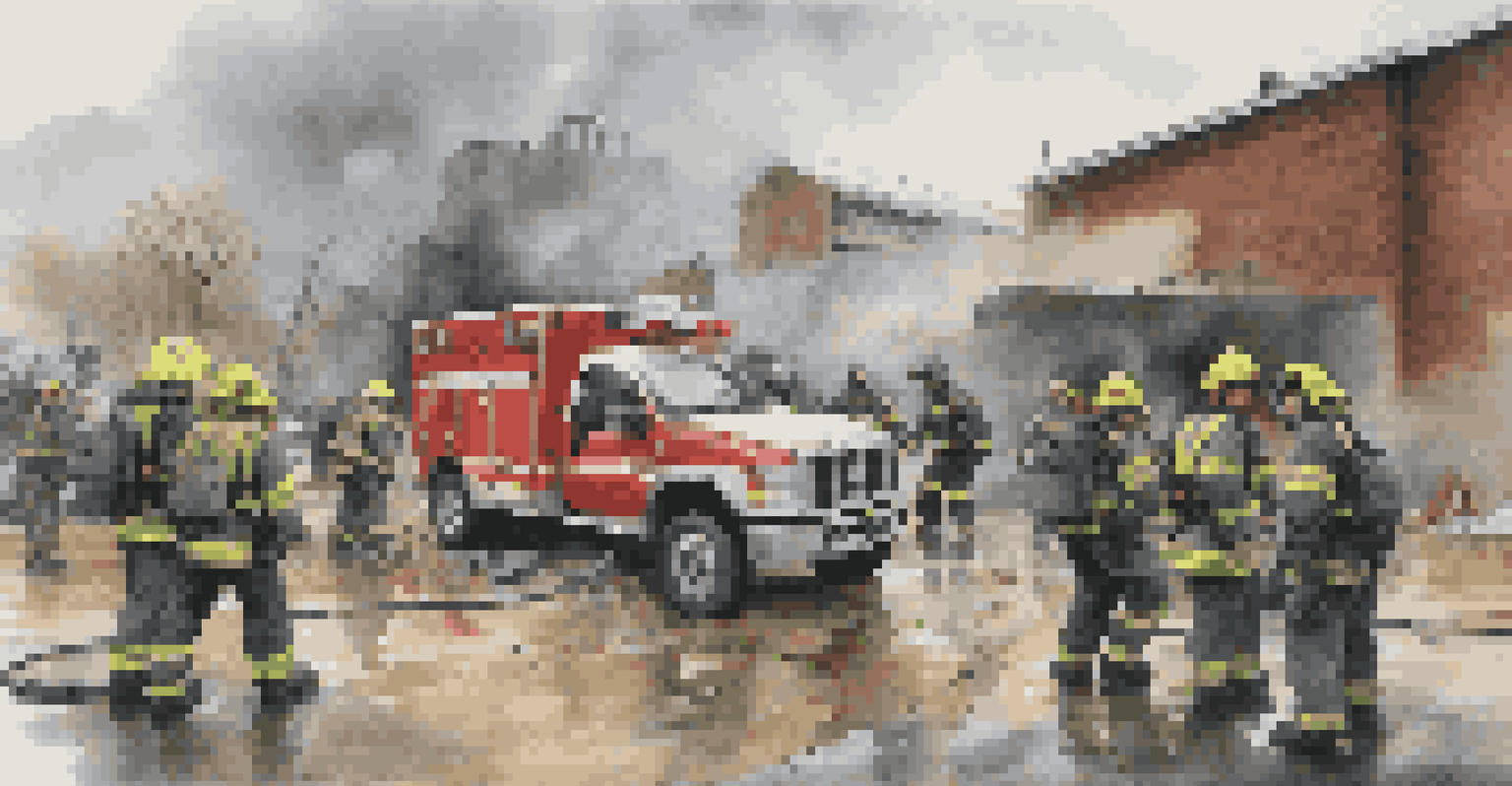Evaluating the Effectiveness of Crisis Management Drills

Understanding the Importance of Crisis Management Drills
Crisis management drills are critical for organizations to prepare for unexpected events. They provide a structured environment where teams can practice their response strategies. By simulating real-life scenarios, organizations can identify weaknesses in their plans and improve overall readiness.
By failing to prepare, you are preparing to fail.
Moreover, these drills help build confidence among team members, ensuring they know their roles during an actual crisis. This preparedness can significantly reduce panic and enhance decision-making under pressure. Ultimately, effective drills contribute to a culture of safety and resilience within the organization.
To truly appreciate their value, organizations must evaluate how well these drills translate into real-world effectiveness. This evaluation involves examining not just the drill's execution, but also its impact on team dynamics and organizational policies.
Setting Clear Objectives for Crisis Management Drills
Every successful crisis management drill begins with clear objectives. These objectives serve as a roadmap, guiding the entire exercise and ensuring all participants understand what they are working towards. For instance, objectives could include improving communication between teams or testing the functionality of emergency protocols.

When objectives are well-defined, it's easier to measure the drill's success. This clarity allows facilitators to focus on specific areas for improvement, making the evaluation process more straightforward. Without these objectives, drills can become unfocused, wasting both time and resources.
Crisis Drills Build Organizational Readiness
Crisis management drills prepare teams for unexpected events by simulating real-life scenarios and identifying weaknesses in response strategies.
Additionally, stakeholders should be involved in the objective-setting process. This collaboration fosters a sense of ownership and ensures that the drill addresses the most pressing concerns within the organization.
Assessing Participant Performance During Drills
Evaluating how participants perform during a crisis management drill is crucial for identifying strengths and weaknesses. Observers should take detailed notes on each team member's actions, communication styles, and decision-making processes. This feedback can be invaluable in highlighting areas where further training may be needed.
In the midst of chaos, there is also opportunity.
It's important to foster a supportive environment during this evaluation phase. Participants should feel encouraged to learn from their experiences rather than being criticized. Constructive feedback can lead to significant improvements in future drills and actual crisis responses.
Using a structured evaluation form can help streamline this process. Such forms allow observers to quantify performance on various criteria, making it easier to analyze the results and implement necessary changes.
Utilizing Feedback for Continuous Improvement
Feedback is the cornerstone of continuous improvement in crisis management drills. After each drill, it's essential to gather input from all participants, including observers and team leaders. This collective insight can reveal patterns and recurring challenges that may need addressing.
Encouraging open dialogue about what worked and what didn’t helps cultivate a culture of learning. By leveraging both positive and negative feedback, organizations can refine their crisis management plans and drill procedures over time. This iterative process not only enhances the effectiveness of future drills but also prepares teams for real-world crises.
Clear Objectives Enhance Drill Success
Establishing clear objectives for crisis drills provides a focused roadmap that helps measure success and fosters ownership among stakeholders.
Moreover, documenting feedback and implementing changes creates a knowledge base for future reference. This documentation ensures that valuable lessons are not forgotten and that each drill builds upon the last.
Incorporating Realistic Scenarios in Drills
To truly evaluate crisis management effectiveness, drills must incorporate realistic scenarios. These scenarios should mimic potential crises the organization could face, whether natural disasters, cybersecurity breaches, or other emergencies. The more realistic the scenario, the better prepared participants will be when faced with an actual crisis.
Realistic drills not only test technical skills but also assess emotional responses and team dynamics. Participants must navigate the stress and unpredictability that come with real-life crises, allowing organizations to evaluate their ability to perform under pressure. This experience is invaluable for honing both individual and team responses.
Additionally, involving external experts in scenario development can bring fresh perspectives and enhance realism. These experts can provide insights into emerging threats and trends, ensuring that drills remain relevant and effective.
Measuring Outcomes and Effectiveness of Drills
Measuring the outcomes of crisis management drills is essential for assessing their effectiveness. This involves analyzing the results against the objectives set beforehand. Key performance indicators (KPIs) such as response times, communication clarity, and successful execution of protocols can provide valuable data.
In addition to quantitative measures, qualitative feedback from participants can paint a fuller picture of the drill's success. Surveys and interviews can help gauge participants' confidence and perceived readiness after the drill. This combination of data types allows organizations to draw meaningful conclusions about their crisis management capabilities.
Continuous Feedback Fuels Improvement
Gathering and documenting feedback after drills allows organizations to refine their crisis management plans and enhance overall effectiveness.
By regularly measuring outcomes, organizations can track improvements over time and adjust their training programs accordingly. This ongoing assessment ensures that crisis management remains a priority and that teams stay equipped to handle potential challenges.
Developing a Comprehensive Evaluation Plan
A comprehensive evaluation plan is vital for effectively assessing crisis management drills. This plan should outline the evaluation process, including who will be involved, what data will be collected, and how feedback will be analyzed. By having a clear framework in place, organizations can ensure a thorough and consistent evaluation.
Including diverse perspectives in the evaluation process enhances the plan's effectiveness. Involving team members from various departments can uncover insights that might otherwise be missed. This cross-departmental approach fosters collaboration and ensures that all aspects of crisis management are considered.

Lastly, organizations should schedule regular evaluations of their drills. Continuous assessment helps maintain high standards and ensures that the crisis management strategy evolves in response to changing circumstances and lessons learned.